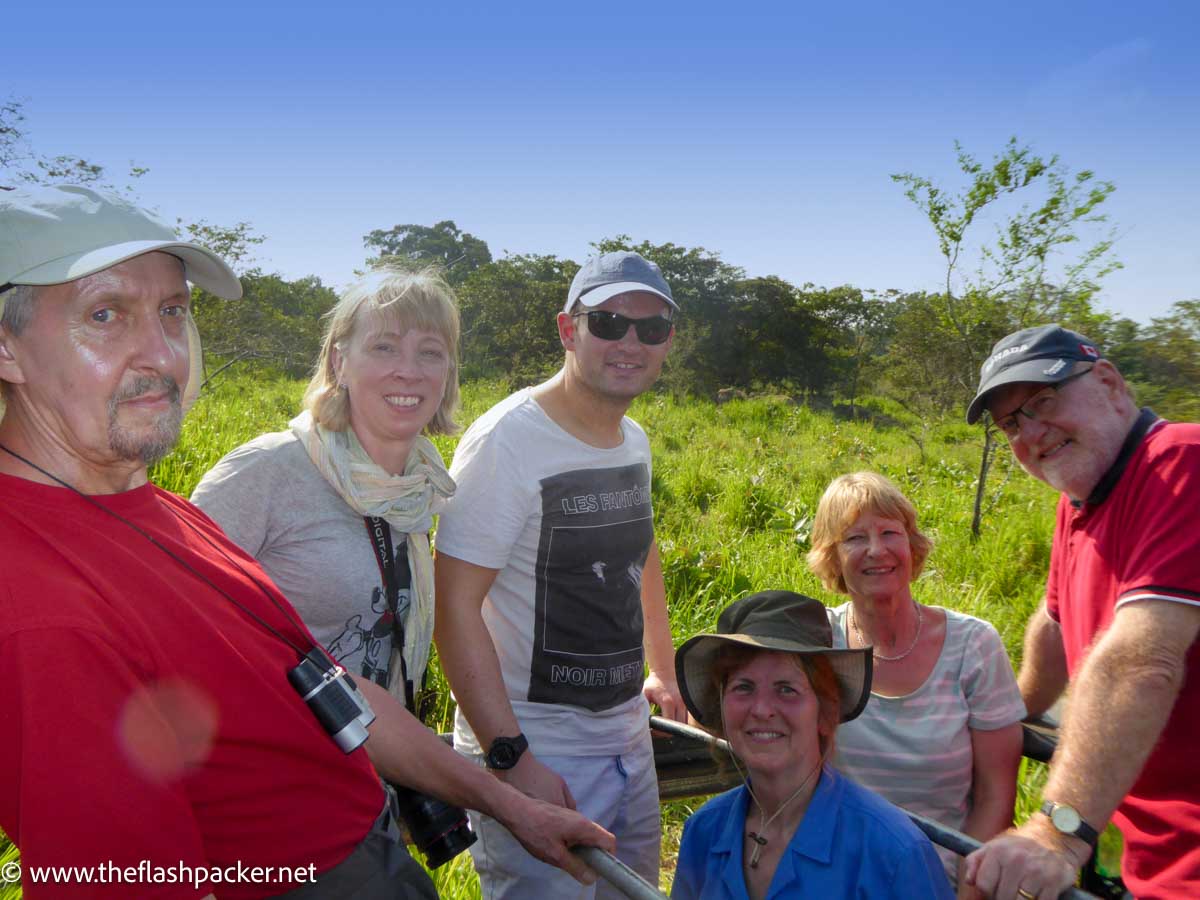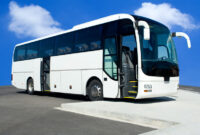Single Travel Groups Over 50: Embarking on a solo adventure after 50 offers unparalleled freedom and self-discovery. This journey, however, requires careful planning and consideration of unique needs and preferences. Whether seeking cultural immersion, thrilling adventures, or tranquil relaxation, the options are plentiful. This guide delves into the exciting world of solo travel for those over 50, providing insights into destination choices, itinerary planning, budgeting, safety, and the social aspects of this enriching experience.
From selecting the perfect destination to managing a budget and ensuring safety, we’ll navigate the nuances of solo travel for this demographic. We’ll explore the benefits of guided tours versus independent travel, address potential challenges, and highlight the numerous opportunities for personal growth and connection that this unique travel style offers. Ultimately, the goal is to empower individuals to plan unforgettable and fulfilling solo adventures.
Types of Tours and Activities
Choosing the right tour or activity is crucial for a fulfilling solo trip. This section outlines various options and provides sample itineraries to help you plan your perfect 10-day adventure, focusing on three distinct travel styles: adventure, relaxation, and cultural immersion. We will also discuss the advantages and disadvantages of guided versus independent travel and address potential challenges faced by solo travelers over 50.
Sample Itineraries for a 10-Day Trip
These sample itineraries provide a framework. Remember to adjust them based on your personal preferences, budget, and physical capabilities. Costs are estimates and can vary significantly depending on the season, booking time, and specific choices.
- Adventure Itinerary (Estimated Cost: $3,500 – $5,000):
- Day 1-3: Hiking and kayaking in Banff National Park, Canada. (Activities: guided hikes, kayaking tours, scenic drives. Cost: $1,000 – $1,500)
- Day 4-5: Whitewater rafting in Colorado River, USA. (Activities: multi-day rafting trip with experienced guides. Cost: $800 – $1,200)
- Day 6-7: Rock climbing and zip-lining in Moab, Utah, USA. (Activities: guided climbing lessons and zip-line adventures. Cost: $500 – $800)
- Day 8-10: Relaxing in a mountain resort with spa treatments. (Activities: Spa days, scenic walks. Cost: $1,200 – $1,500)
- Relaxation Itinerary (Estimated Cost: $2,500 – $4,000):
- Day 1-3: Luxury resort stay in the Maldives. (Activities: Beach relaxation, swimming, snorkeling. Cost: $1,000 – $1,500)
- Day 4-5: Yoga retreat in Bali, Indonesia. (Activities: Daily yoga sessions, meditation, spa treatments. Cost: $600 – $900)
- Day 6-7: Cruise to nearby islands. (Activities: Island hopping, exploring local markets, enjoying onboard amenities. Cost: $500 – $800)
- Day 8-10: Relaxation and cultural exploration in a quiet village. (Activities: Cooking class, local market visits, leisurely walks. Cost: $400 – $800)
- Cultural Immersion Itinerary (Estimated Cost: $2,000 – $3,500):
- Day 1-3: Exploring historical sites in Rome, Italy. (Activities: Guided tours of the Colosseum, Roman Forum, Vatican City. Cost: $700 – $1,000)
- Day 4-5: Cooking class and food tour in Tuscany, Italy. (Activities: Hands-on cooking experience, exploring local markets and vineyards. Cost: $500 – $700)
- Day 6-7: Exploring the art and architecture of Florence, Italy. (Activities: Visiting the Uffizi Gallery, Ponte Vecchio, Duomo. Cost: $400 – $600)
- Day 8-10: Exploring the Amalfi Coast, Italy. (Activities: Scenic drives, boat trips, exploring charming villages. Cost: $400 – $1,200)
Guided Tours versus Independent Travel
Guided tours offer structure, convenience, and the benefit of expert knowledge, reducing stress and logistical challenges for solo travelers. Independent travel provides greater flexibility and allows for a more personalized experience, but requires more planning and self-reliance. For single travelers over 50, the optimal choice depends on their comfort level with independent exploration and their desire for social interaction. Many guided tours cater specifically to this demographic, offering smaller group sizes and a more relaxed pace.
Challenges Faced by Single Travelers Over 50 and Their Solutions
- Challenge: Loneliness and lack of social interaction. Solution: Opt for smaller group tours or join group activities to meet fellow travelers. Consider tours specifically designed for solo travelers.
- Challenge: Physical limitations and accessibility concerns. Solution: Carefully research tour itineraries and activities to ensure they are suitable for your fitness level. Choose tours that offer adjustable pacing or alternative options for activities.
- Challenge: Safety concerns while traveling alone. Solution: Inform family and friends of your itinerary. Choose reputable tour operators and accommodations. Utilize safety apps and resources.
Budgeting and Financial Considerations
Planning your finances is crucial for a successful solo trip, especially for travelers over 50. Understanding potential costs and employing effective saving strategies can significantly enhance your travel experience and prevent unexpected financial strain. This section details average daily budgets, money-saving tips, and the importance of travel insurance.
Average Daily Budgets for Solo Travelers Over 50
The daily budget for a solo traveler over 50 can vary greatly depending on the destination and preferred travel style. The following table provides estimates for three different destinations, representing budget, mid-range, and luxury travel styles. These are averages and can fluctuate based on specific choices and seasonal variations.
| Destination | Budget Level | Daily Accommodation Cost | Daily Activity Cost |
|---|---|---|---|
| Southeast Asia (e.g., Thailand, Vietnam) | Budget | $30 – $50 | $30 – $50 |
| Mediterranean Europe (e.g., Spain, Italy) | Mid-Range | $100 – $150 | $75 – $125 |
| Canada (e.g., Vancouver, Banff) | Luxury | $250 – $400 | $150 – $250 |
Strategies for Saving Money While Traveling Solo
Several strategies can help solo travelers over 50 maximize their budget. Utilizing senior discounts, often available for accommodations, attractions, and transportation, can lead to substantial savings. Choosing budget-friendly accommodations, such as hostels (many offer private rooms), guesthouses, or Airbnb options outside city centers, can significantly reduce lodging costs. Careful meal planning, including utilizing local markets for groceries and opting for less expensive eateries, helps control food expenses. Finally, researching free activities, like walking tours or exploring parks, complements the paid experiences.
The Importance of Travel Insurance
Travel insurance is paramount for solo travelers over 50. Unexpected medical emergencies, trip cancellations, or lost luggage can be financially devastating. Comprehensive travel insurance policies should cover medical expenses, including emergency evacuation, trip cancellations due to unforeseen circumstances (like illness), and lost or stolen belongings. Specific policies catering to older travelers often include provisions for pre-existing conditions, which are crucial to consider. For example, a policy might cover medical costs associated with a pre-existing condition that is aggravated during the trip, or it might offer repatriation services in case of a serious medical event. It’s vital to compare policies and choose one that suits individual needs and health circumstances.
Safety and Health Considerations
Planning a solo trip, especially for women over 50, requires careful consideration of safety and health. This section addresses key aspects to ensure a worry-free and enjoyable adventure in Southeast Asia. Prioritizing safety and well-being is paramount for a fulfilling travel experience.
Essential Safety Tips for Single Women Travelers Over 50
Prioritizing personal safety is crucial for solo female travelers. These tips offer practical advice to minimize risks and navigate potential challenges confidently.
- Share your itinerary: Provide a detailed travel plan, including accommodation details and flight information, to a trusted friend or family member. Regular check-ins can offer peace of mind.
- Be aware of your surroundings: Maintain vigilance in crowded areas and avoid walking alone at night. Trust your instincts; if a situation feels unsafe, remove yourself immediately.
- Use reputable transportation: Opt for official taxis or ride-sharing services with traceable records. Avoid unofficial transportation that lacks accountability.
- Protect your valuables: Use secure bags and avoid displaying expensive jewelry or electronics. Keep important documents and cash in separate, secure locations.
- Learn basic self-defense techniques: Consider taking a self-defense course before your trip. Knowing basic techniques can boost confidence and provide a sense of security.
Health Precautions and Recommended Vaccinations for Southeast Asia
Southeast Asia presents unique health challenges, particularly for older travelers. Understanding potential risks and taking necessary precautions is vital for a healthy trip.
Older travelers may be more susceptible to certain illnesses due to weakened immune systems. Consulting a doctor well in advance of your trip is essential. They can assess your individual health needs and recommend appropriate vaccinations and preventative measures.
Common health concerns in Southeast Asia include:
- Mosquito-borne illnesses: Dengue fever, malaria, and Zika virus are prevalent in some regions. Consult your doctor about necessary malaria prophylaxis and utilize mosquito repellents diligently.
- Food and waterborne illnesses: Stick to bottled water, avoid raw or undercooked food, and choose reputable restaurants to minimize the risk of gastrointestinal issues. Consider carrying anti-diarrheal medication.
- Hepatitis A and Typhoid: Vaccinations for Hepatitis A and Typhoid are highly recommended. These vaccinations offer protection against common illnesses spread through contaminated food and water.
- Heatstroke: Southeast Asia can experience intense heat. Stay hydrated, wear appropriate clothing, and avoid strenuous activity during the hottest parts of the day.
- Other infections: Consult your doctor about potential risks for other infections like rabies and Japanese encephalitis, depending on your itinerary.
Accessing Healthcare Services While Traveling Internationally
Having a plan for accessing healthcare while abroad is essential. Knowing where to turn in case of an emergency can provide peace of mind.
- Travel insurance: Comprehensive travel insurance is crucial, covering medical emergencies, evacuations, and other unforeseen circumstances.
- Emergency contact information: Keep a list of emergency numbers, including local emergency services and your country’s embassy or consulate.
- Finding English-speaking doctors: Many hospitals and clinics in tourist areas employ English-speaking staff. Your hotel or tour operator can often provide referrals.
- Pharmacies: Locate nearby pharmacies to purchase over-the-counter medications for minor ailments.
- Copies of medical records: Carry copies of your medical records, including vaccination history and any pre-existing conditions, in case of emergencies.
Ending Remarks
Solo travel for individuals over 50 is a testament to the spirit of adventure and self-reliance. By carefully considering factors such as destination, budget, safety, and social connection, a truly enriching and memorable experience can be crafted. Whether embracing the thrill of independent exploration or the comfort of a guided tour, the journey promises personal growth, unique discoveries, and lasting memories. So, pack your bags, embrace the unknown, and embark on your next chapter of adventure.



